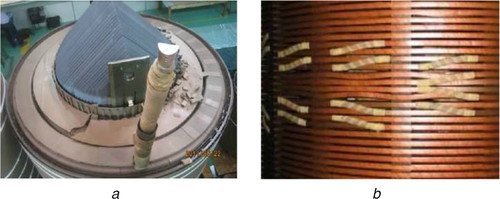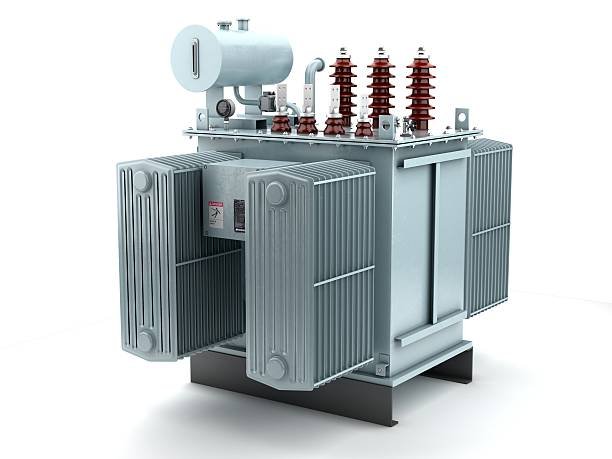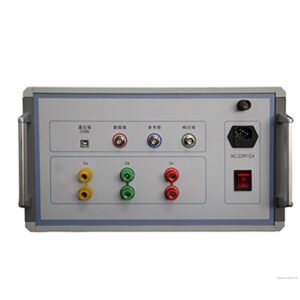Transformer winding deformation refers to the physical distortion or displacement of the transformer windings from their intended position or shape. It can occur due to various factors and may result in operational issues, reduced performance, and potential transformer failures,with outlet short-circuits being particularly hazardous to transformers.

Some common types of winding deformations include:
Axial Deformation: Axial deformation refers to the elongation or compression of the winding along its axial direction. This can be caused by mechanical stresses, thermal expansion or contraction, or improper handling during transportation or installation. Axial deformation can lead to changes in the turn-to-turn insulation spacing, affecting the dielectric strength and potentially causing insulation breakdown.
Radial Deformation: Radial deformation involves changes in the radial dimensions of the winding, typically due to mechanical forces or thermal expansion. It can result in changes in the winding’s shape, concentricity, or alignment. Radial deformation may lead to changes in the magnetic field distribution, affecting the transformer’s performance and introducing additional losses.
Turn-to-turn short circuit: Shorted turns occur when two or more turns of the winding come into direct contact or are electrically connected. This can be caused by insulation breakdown, mechanical displacement, or manufacturing defects. Shorted turns can result in increased current flow, excessive heating, and reduced efficiency. They can also introduce additional impedance in the affected portion of the winding, leading to imbalances and increased losses.
Displaced Windings: Displaced windings refer to a situation where the windings shift from their original positions or become misaligned. This can occur due to mechanical forces, vibrations, or inadequate support. Displaced windings can affect the magnetic coupling between the primary and secondary windings, leading to imbalances, reduced efficiency, and potential insulation failures.
Deformed Insulation: In some cases, the insulation materials used between the winding turns or layers can undergo deformation or degradation. This can result from mechanical stresses, thermal cycling, or exposure to contaminants. Deformed insulation can compromise the electrical insulation properties, increase the risk of short circuits or insulation breakdown, and reduce the overall reliability of the transformer.
What is the harm of transformer sudden short circuit?
The harm is mainly manifested in two aspects.
(1) transformer suddenly short-circuit will produce a large short-circuit current. The duration is short, but before the circuit breaker is too late to cut off, the transformer will be affected by the impact of short-circuit current, affecting the thermal stability, which may cause damage to the transformer.
(2) When the transformer is suddenly short-circuited, the overcurrent will generate a large electromotive force, affecting the dynamic stability, deforming the windings, destroying the insulation of the windings, and damaging other components.
If a transformer short-circuit failure is accompanied by a substation protection or DC system failure, it often results in a malignant accident in which the transformer burns and explodes. For example, transformer explosion, etc.

What is the purpose of the transformer winding deformation test?
The purpose of the transformer winding deformation test is to identify and assess any deformations or abnormalities in the windings of a transformer . This test is conducted to ensure the safe and reliable operation of power systems.
1)Transformer Winding Deformation caused the safety hazard
Transformer windings are crucial components that carry electrical currents and generate magnetic fields within a transformer. Any deformation or distortion in the windings can lead to various issues, including increased electrical losses, overheating, and mechanical stress. These problems can compromise the performance, efficiency, and lifespan of the transformer and may even pose a safety risk.
Transformer in the transportation, installation process by the impact or in the operation of a sudden short-circuit, etc. may make the winding deformation (such as axial amplitude size change; body displacement; winding of the distortion, bulging, etc.), these deformations may make the transformer winding insulation is damaged or its mechanical strength decreased.
When the degree of deformation of the winding is serious, it may immediately lead to turn insulation breakage to form a short circuit between turns (for small distribution transformers); or lead to the main insulation strength is reduced and cause the main insulation breakdown (for more than medium-sized transformers). Therefore, the winding deformation measurement can effectively determine the winding deformation to prevent transformer accidents.

2) Transformer winding deformation test is a effective preventative Maintenance.
Regularly testing for winding deformation can help identify issues early, allowing for timely maintenance and repairs. Addressing deformations promptly can extend the transformer’s lifespan and reduce the likelihood of costly breakdowns.
In conclusion, engineers and technicians can detect and evaluate any potential deformations in the transformer windings by conducting the winding deformation test . This test helps identify hidden dangers and allows for timely maintenance or repair actions to be taken, preventing further damage or potential failures.
Which methods are used to detect transformer winding deformations.
There are various methods used to detect transformer winding deformations, including:
Frequency Response Analysis (FRA): This method analyzes the frequency response of the transformer windings to identify any changes or abnormalities. It measures the transfer function between the input and output signals of the windings and compares them to the expected response. Deviations from the expected response indicate winding deformations.
Sweep Frequency Response Analysis (SFRA): SFRA is a variation of FRA that involves sweeping a range of frequencies to obtain a comprehensive assessment of the winding’s frequency response. This method provides detailed information about the nature and severity of the deformations.

Transformer winding deformation tester KVRB is to identify any deformations or abnormalities in the windings of a transformer . By detecting and assessing these deformations, the test helps ensure the safe and reliable operation of power systems, preventing potential failures and ensuring the longevity of the transformer.






